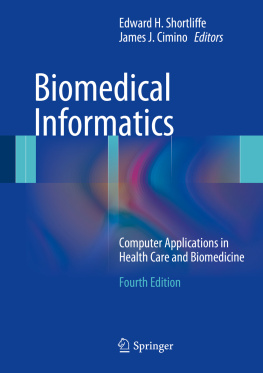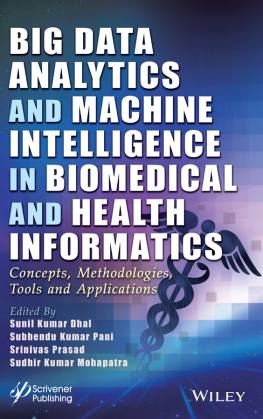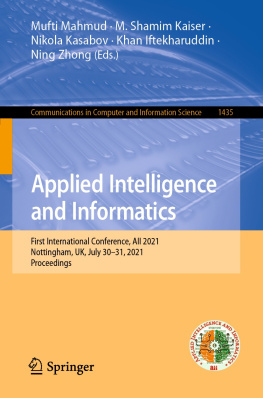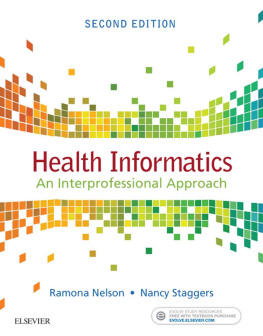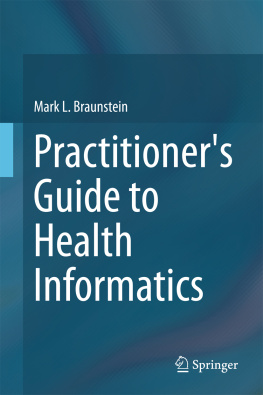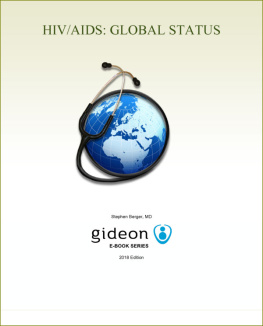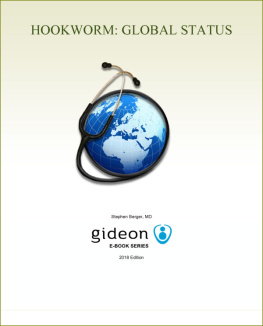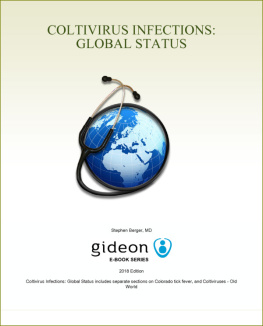Edward H. Shortliffe - Biomedical Informatics
Here you can read online Edward H. Shortliffe - Biomedical Informatics full text of the book (entire story) in english for free. Download pdf and epub, get meaning, cover and reviews about this ebook. year: 0, publisher: Springer London, London, genre: Politics. Description of the work, (preface) as well as reviews are available. Best literature library LitArk.com created for fans of good reading and offers a wide selection of genres:
Romance novel
Science fiction
Adventure
Detective
Science
History
Home and family
Prose
Art
Politics
Computer
Non-fiction
Religion
Business
Children
Humor
Choose a favorite category and find really read worthwhile books. Enjoy immersion in the world of imagination, feel the emotions of the characters or learn something new for yourself, make an fascinating discovery.
- Book:Biomedical Informatics
- Author:
- Publisher:Springer London, London
- Genre:
- Year:0
- Rating:4 / 5
- Favourites:Add to favourites
- Your mark:
- 80
- 1
- 2
- 3
- 4
- 5
Biomedical Informatics: summary, description and annotation
We offer to read an annotation, description, summary or preface (depends on what the author of the book "Biomedical Informatics" wrote himself). If you haven't found the necessary information about the book — write in the comments, we will try to find it.
Biomedical Informatics — read online for free the complete book (whole text) full work
Below is the text of the book, divided by pages. System saving the place of the last page read, allows you to conveniently read the book "Biomedical Informatics" online for free, without having to search again every time where you left off. Put a bookmark, and you can go to the page where you finished reading at any time.
Font size:
Interval:
Bookmark:
Recurrent Themes in Biomedical Informatics
- Why is information and knowledge management a central issue in biomedical research and clinical practice?
- What are integrated information management environments, and how might we expect them to affect the practice of medicine, the promotion of health, and biomedical research in coming years?
- What do we mean by the terms biomedical informatics , medical computer science , medical computing , clinical informatics , nursing informatics , bioinformatics , public health informatics , and health informatics ?
- Why should health professionals, life scientists, and students of the health professions learn about biomedical informatics concepts and informatics applications?
- How has the development of modern computing technologies and the Internet changed the nature of biomedical computing?
- How is biomedical informatics related to clinical practice, public health, biomedical engineering, molecular biology, decision science, information science, and computer science?
- How does information in clinical medicine and health differ from information in the basic sciences?
- How can changes in computer technology and the way patient care is financed influence the integration of biomedical computing into clinical practice?
Font size:
Interval:
Bookmark:
Similar books «Biomedical Informatics»
Look at similar books to Biomedical Informatics. We have selected literature similar in name and meaning in the hope of providing readers with more options to find new, interesting, not yet read works.
Discussion, reviews of the book Biomedical Informatics and just readers' own opinions. Leave your comments, write what you think about the work, its meaning or the main characters. Specify what exactly you liked and what you didn't like, and why you think so.

